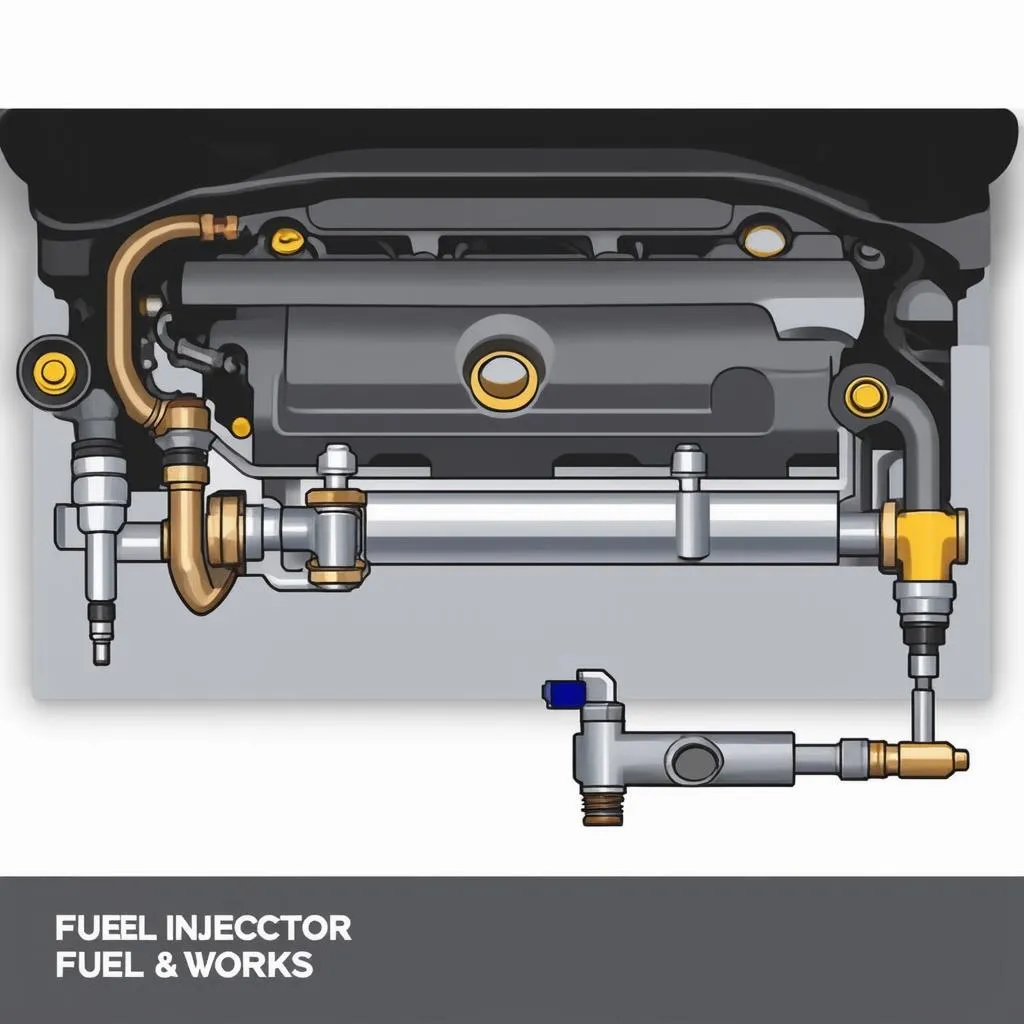Imagine this: you’re cruising down the Pacific Coast Highway, California, in your sleek Audi A4, the sun is setting, and life is good. Suddenly, your engine sputters, your check engine light flashes ominously, and your joyride turns into a stressful situation. One possible culprit? Faulty fuel injectors.
Thankfully, a scan tool, your trusty sidekick in the world of car diagnostics, can help you pinpoint injector issues. But how exactly do you use it? This comprehensive guide dives deep into the world of checking injectors with a scan tool, equipping you with the knowledge to diagnose and potentially even prevent those dreaded engine hiccups.
Understanding the Importance of Fuel Injectors
Before we delve into the diagnostics, let’s appreciate the critical role fuel injectors play. These small but mighty components are the gatekeepers of your engine’s combustion process. They precisely atomize fuel and spray it into your engine’s cylinders, where it mixes with air and ignites, propelling your vehicle forward.
From a mechanic’s perspective, like the esteemed Dr. Franz Müller, author of “Automotive Engine Management Systems,” “Fuel injectors are the unsung heroes of engine performance. Their precision is crucial for optimal fuel economy, emissions control, and overall engine health.”
Using a Scan Tool to Check Your Injectors
Now, let’s get down to business. Here’s how to use a scan tool to assess those crucial fuel injectors:
1. Connecting Your Scan Tool
First things first, connect your scan tool to your vehicle’s OBD-II port. This port is typically located under the dashboard on the driver’s side.
2. Accessing the Engine Control Module (ECM)
Once connected, turn on your ignition (but don’t start the engine). Your scan tool will communicate with your car’s ECM, the brain behind your engine’s operations.
3. Navigating to Injector Data
Within your scan tool’s menu, navigate to “Data Stream” or “Live Data.” Here, you’ll find a wealth of information from various sensors, including those related to your fuel injectors.
4. Key Parameters to Look For
Focus on these key parameters:
- Fuel Injector Pulse Width: This value indicates how long the injector is commanded to stay open, delivering fuel. Fluctuations or significantly different readings across cylinders can point to injector problems.
- Fuel Pressure: Maintaining proper fuel pressure is crucial for injector performance. Low pressure can lead to lean conditions, while high pressure can cause rich conditions, both potentially damaging your engine.
- Short and Long Term Fuel Trim: These values indicate how the ECM is adjusting fuel delivery based on oxygen sensor readings. Significant deviations from zero can indicate injector issues or other fuel system problems.
5. Running Injector Tests
Some advanced scan tools, like the ones used by specialized mechanics on high-performance vehicles at Germany’s famed Nürburgring racetrack, offer active tests. These tests allow you to command individual injectors on and off, observing their response and listening for any unusual clicking or buzzing noises.
 Fuel Injector Diagram
Fuel Injector Diagram
Common Injector Issues and Their Symptoms
Beyond the data displayed on your scan tool, be aware of these common symptoms that might indicate injector problems:
- Rough Idle: If your engine feels shaky or vibrates excessively while idling, it could be a sign of uneven fuel delivery due to clogged or malfunctioning injectors.
- Misfires: Engine misfires, often felt as a hesitation or stuttering during acceleration, can be caused by injectors failing to deliver fuel at the right time or in the right quantity.
- Reduced Fuel Efficiency: If you find yourself filling up your tank more frequently, a faulty injector could be the culprit, leaking fuel and reducing your miles per gallon.
Seeking Professional Help
While a scan tool is a powerful tool for diagnosing injector problems, remember that it’s just one piece of the puzzle. If you encounter persistent issues or are uncomfortable interpreting the data, don’t hesitate to seek professional help.
A qualified mechanic, armed with advanced diagnostic equipment and experience, can accurately pinpoint the root cause of your engine troubles, saving you potential headaches and costly repairs down the road.
 Mechanic using scan tool
Mechanic using scan tool
Related Questions
Here are some additional questions you might find helpful:
- Can I clean my fuel injectors myself?
- What are the signs of a bad fuel injector driver?
- How much does it cost to replace fuel injectors?
For insights into these questions and more, explore our other informative articles on DiagXcar, your trusted source for all things automotive.
Need Expert Assistance?
Having trouble diagnosing your car’s injector issues with a scan tool? We understand that the world of automotive diagnostics can be complex. That’s why our team of expert mechanics is here to help! Contact us via WhatsApp at +84767531508 for 24/7 support on all your diagnostic tool needs. We can help you interpret scan tool data, troubleshoot potential issues, and get you back on the road with confidence.
Keep Your Engine Running Smoothly
Remember, regular maintenance and timely diagnostics are key to a happy and healthy engine. By understanding how to use a scan tool and recognizing the signs of potential injector problems, you can proactively address issues and keep your vehicle running at its best for miles to come.


